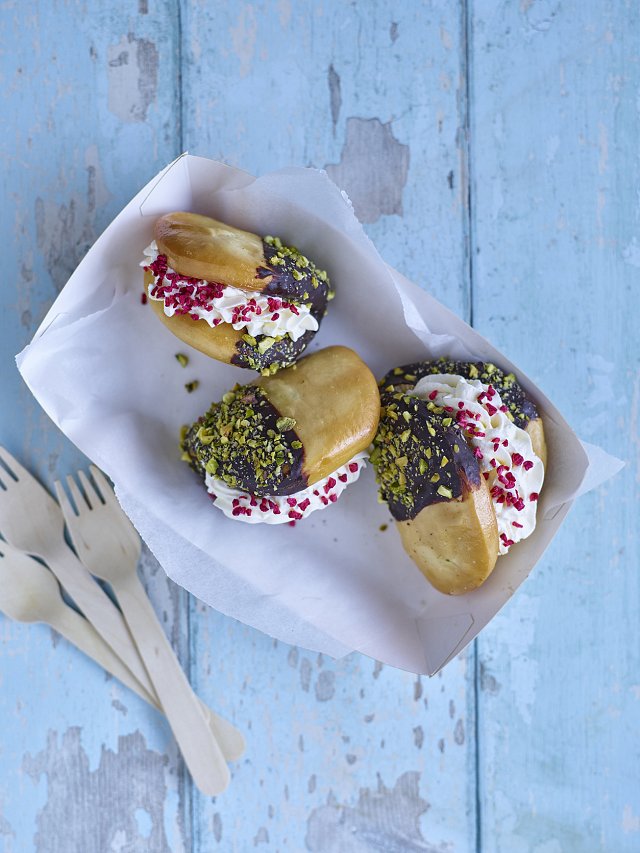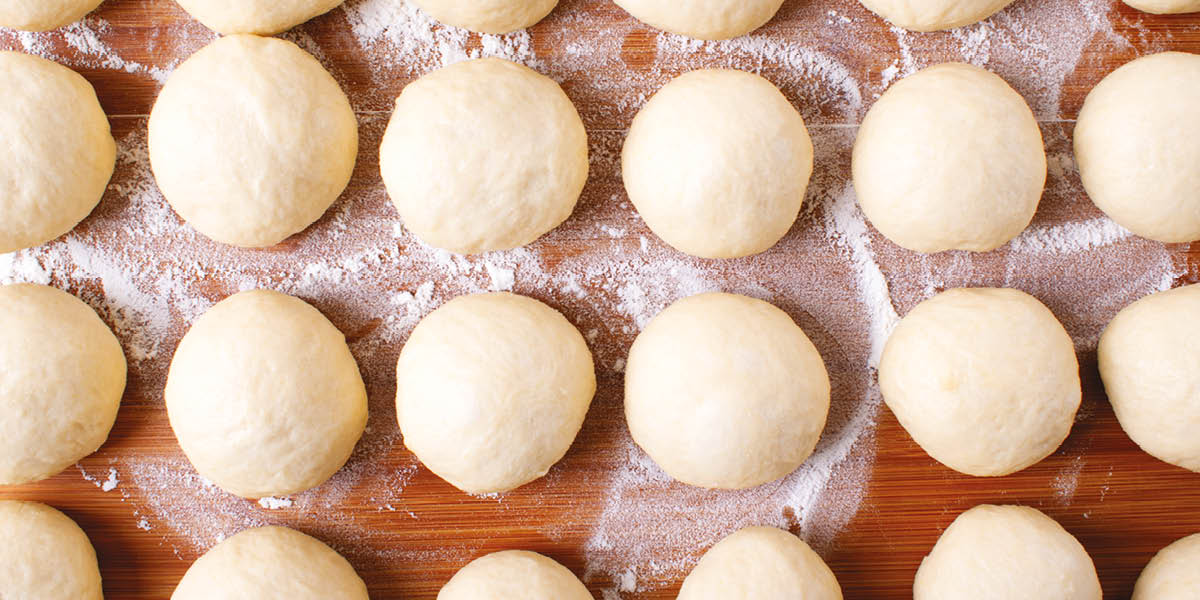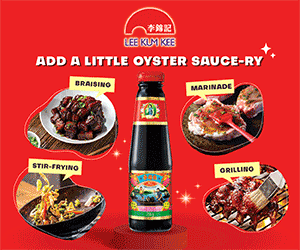Feature: The doughs and don'ts

Baps and bagels, brioche and baguettes, flatbreads and focaccias – what’s not to love about the vast and versatile category that beholds such dough-based delights?
Dough is often the unsung hero of the out-of-home (OOH) experience. The ability to take a few basic ingredients, then mix, knead and shape them into whatever sort of doughy vehicle we require, is consistently taken for granted. Many of these bakes are so deeply ingrained in our daily routines, they quietly slip into the subconscious. While we may not really notice when such products are there, we most certainly take note when they’re not!
That’s why demand for dough-based goods abounds across the UK and the world. In this country alone, the bakery market is estimated to be worth a formidable £4.4bn, making it the largest sector of the industry today. The Federation of Bakers places the category’s current total volume at just under 4bn units – the equivalent to almost 11m loaves and packs sold every day. You could even say the breads, buns and bases category really is second to naan…
Quality bakes
Premiumisation has been sweeping hospitality in recent years – a trend accelerated by the pandemic. Those long, lonely months of lockdown changed buying behaviours for good, with Ernst & Young’s Future Consumer Index Report revealing that people are expecting to buy better in the longer term, with high quality remaining the purchase criterion most (46%) are willing to pay a premium price for.
“When it comes to beads and buns, the ongoing focus really is quality,” says Charles Harris, founder of the two-strong, Midlands-based brand, Libertine Burger. “Customers seem increasingly aware of what a quality bun is. It’s what they expect – and so, we provide.”
Harris spent a long time looking for the perfect burger bun supplier, eventually selecting an artisan bakery in London. “We use semi-brioche buns – full brioche is a bit too sweet,” he explains. “Semi-brioche is the right flavour and texture and holds well, which is what we need for our burgers.
“There are a lot of gimmicks out there when it comes to burger buns, but sometimes the key to standing out is just keeping it simple and focusing on quality,” he adds. “Crazy trends come and go, but at the end of the day people want a burger bun that tastes good and does the job. Opting for quality means you will stand out against brands using inferior, lower-quality buns.”
In the Instagram era, customers really do eat with their eyes and their tummies, and brioche has become recognised as a premium option in the market of sandwich carriers. “It offers the perfect balance, known for its quality and taste but not so niche that consumers are put off by trying something new,” says Scott Oakes, commercial manager at St Pierre Bakery Groupe.
Dining out is a multi-sensory experience, so it makes sense that great taste alone is no longer enough to satisfy customer appetites. “Consumers want products that look great, smell great and taste great, too,” says Kevin Hughes, country manager UK&I at La Lorraine Bakery Group. “Speciality breads provide the perfect opportunity to deliver that across restaurant menus, with consistent quality and fuss-free service.
“The speciality and seeded bread category is thriving and transforming at record pace, and the rising popularity of flexitarian diets is shaping the OOH market, along with the demand for more free-from, gluten-free and plant-based options,” he adds.
Heft in High Newton, Cumbria, is perfectly aligned to fulfil the growing demand for artisanal bakes, employing its very own in-house baker, Sabina Dabrowska. “Sourdough is ever popular, and I can’t see that changing any time soon,” she says. “But people are looking further into the quality and provenance of ingredients, as well the finished products, so heritage grains and seasonal produce to add to the bread are gaining momentum. We currently use wild garlic and shallot in our tiger loaf, but we’ll be changing it at some point in line with the seasons.”

Sabina Dabrowska, baker, Heft (Image: Jenny Jones Photography)
The bland and the basic will not suffice as diners entertain their cravings for adventurous flavours, presenting a unique chance for operators looking to innovate the products in their pantry. Encourage your kitchen team to experiment and shake up your offering with well thought-out recipes that make the most of fresh, seasonal produce.
But remember, things aren’t easy for consumers right now, who face the very same challenges as the hospitality sector. In these difficult times, as the cost of raw ingredients continues to rise, operators should strive to provide indulgences which feel like a treat, but don’t cost the earth to make. As Rob Owen, development chef at Creed Foodservice, explains: “Creating ‘luxurious’, high-profit products out of basic ingredients – while catering to the consumer and the rising cost of living by offering something that feels decadent for a relatively low-ticket price – is key.”
Health with heart
Dough suffers from the curse of the carbs. Bread products in particular are demonised for being fattening, making them the subject of restrictive eating, with some choosing to avoid the food source entirely. But carbs are essential to a healthy diet, providing the body with glucose which is then converted into energy to support bodily functions and physical activity. Carbohydrates are good for us when consumed in moderation and, when it comes to bread, the market for healthier, artisanal products is growing by the day.
“There is huge potential in the bread market, but as the health trend continues to storm the nation, speciality bread products are proving more popular with consumers,” says Hughes.
Healthy eating has become a priority for many – another shift in behaviour that was elevated by the pandemic. According to the Food & Health Survey by the International Food Information Council, more than four in five consumers believe their food habits and preferences have changed since the Covid-19 outbreak, with one in five agreeing that they now make healthier choices. “As a result, health benefits are playing an increasing role in consumers’ choices within the bread category,” adds Hughes. “This offers up so many new opportunities for caterers to not only develop their products – introducing new and exciting flavours and varieties – but to help increase sales.”
Be sure to scope out a reliable supplier that can offer high-quality seeded, wholegrain or bran-based loaves – all of which are rich sources of fibre, playing a vital role in digestive health and disease prevention. Many of these products will also be vegan – a key focus area for operators, with 25% of the population expected to be vegan or vegetarian by 2025 (Sainsbury’s Future of Food Report). As such, marketing towards vegan alternatives could open up your offering to a new and ever-growing stream of guests, significantly boosting profits and driving footfall to your venue.
Gluten morgen
Inclusivity is a hallmark of good hospitality. It’s estimated that 1–2% of adults and 5–8% of children across the UK possess some form of food allergy or dietary condition, equating to around two million people. And that’s not including those who suffer any type of food intolerance. The spectrum is broad and often complex, but venues have a responsibility – and a legal obligation – to cater to those with specific dietary needs safely and effectively.
“As diets have changed in recent years, so has the demand for more specialised breads,” says Tom Styman-Heighton, development chef at Funnybones Foodservice. “Gluten-free and vegan products are now part of the bakery landscape and food outlets are required to cater for customers who want to eat these wheat- and dairy-free products.”
Corn tortillas are very common in South America, adds the chef, and have the advantage of being naturally gluten-free, vegetarian, vegan and dairy-free, on top of being low in fat, sugar and salt. “Those made from blue corn have a distinctive dark purple colouring, which looks dramatic on the plate and offers even more in the way of health benefits. Corn-based tortillas are served slightly differently to more conventional wraps – kitchens should toast them before serving and, for best results, fill to order.”
Heft offers a bread course alongside every meal, served with home-made butter that makes it feel like a standalone course in itself. “We even make our own gluten-free bread, which we’re fairly proud to say has a decent bounce to it,” says Dabrowska. “That’s not always the case when catering for coeliacs!”
Warwick-based pizza restaurant Dough & Brew also strives to offer the very same calibre of food and service to coeliac diners. As Martin comments: “Our gluten-free base is very popular with the coeliac community, but we have noticed that many people who have an intolerance can enjoy sourdough without issue – so long as it has a long enough proving time. Our dough proves for at least 72 hours, which breaks down the proteins that cause the issue.”
For those looking to up their gluten-free dough game, it’s best to start with a menu review. This will allow you to break down your recipes and get to grips with exactly what goes in each one. Then, highlight those with allergens and look at ways these can be eliminated. Why not offer sandwiches with a choice of bread options, so customers can tailor their meals to their needs? That way, no one gets ill or goes hungry and every guest feels welcome in your venue – a win-win from every angle.
Home-made charm
Question: what’s the best way to make your dough-based items stand out in an incredibly crowded category? Answer: to make your own in-house. As Dabrowska explains: “Using interesting flavours and grains makes it unique to you. We also retail bread, which brings in people from our village while giving our patrons a little something to take home with them.”
But, says the baker, hiring someone who is confident in basic breadmaking is key, as they are well placed to experiment with ease. “If you’re starting from scratch, look for someone who has a passion for bread and is willing to push boundaries.”
The team at Dough & Brew are also well-versed in the art of doughmaking. The UK pizza market is forecast to exceed £3.4bn in 2022, according to Statista, showing just how popular – and therefore saturated – this stream of the industry is.
As Hughes points out: “Impressing your customers is all about thinking outside the box in terms of your food offering. Competition is fierce as the market evolves, so it’s important that you stand out from your rivals.”
Making their very own bases means chefs can give a dose of special care and attention to every pizza that leaves the kitchen – a perk that’s not gone unnoticed by guests.
“As the name suggests, we have a lot of dough on our menu,” says Dough & Brew owner, John Martin. “We also make cinnamon buns, our own pain de mie, burger buns and rolls, and we use a lot of sourdough bread, too.
“With the cinnamon buns, we started traditional and then created a Nutella & Biscoff version, as well as a breakfast version with sausage, bacon and cheese, plus we added seasonal varieties – such as our Christmas bun,” he adds. “It really is a case of anything goes, so operators should feel free to experiment!”
Global grains
Heightened focus on quality products and dishes has simultaneously given rise to the globalisation of bread-based items. Restaurants now have easy access to an extensive and exciting market including everything from Italian schiacciata and French baguettes, to Spanish barra and American-style bagels. The continued growth of baguettes and bagels is helping to drive a market that has plateaued in recent years. While bread sales slumped almost 3.2% in the 12 months to May 2022, according to Nielsen, rolls and baguettes were up 3.1%, and now represent more than 12% of the entire bread category.
Elsewhere, bagel sales are up 15% in the last two years alone, and while growth has recently slowed, it remains the most impactful sub-category within morning goods, worth £144m. And that’s just the tip of the iceberg.
“Tortillas are an excellent choice when a flatbread is required, as they offer a low-fat and healthy alternative to some of the more oily and salty flatbreads around,” says Styman-Heighton. “Perfect, of course, for a range of Mexican dishes, from burritos to enchiladas, tortillas have a great number of uses and are an essential product for many food outlets. Wrap up an unusual filling for lunch service, fry up some nachos for a snack, or put together some fajitas for the evening meal. The possibilities are endless.”
Operators should relish the versatility of wraps – which work perfectly well as a food-to-go item or part of a sit-down meal. The market is rife with flatbreads that can double as wraps, allowing chefs to dial up a simple sandwich menu to something with a little more edge. They can also be used to create a Middle Eastern-inspired pizza, topped with feta cheese, roasted veg, optional minced meat and traditional herbs from the region, such as za’atar.
Now, how about an excursion to eastern Asia to sample the region’s dough-based treats? Steamed bao, for example (also known as ‘hirata buns’), are all the rage in the UK right now, presenting kitchens with an in-demand menu option that’s easy to prepare and adapt.
“Bao are versatile, taste delicious, are super easy to serve and just the right size for hand-held light bites,” says Gordon Lauder, managing director of frozen food distributor Central Foods. “Conveniently, bao lend themselves perfectly to a range of serving situations, both sweet and savoury, which is handy for operators who need to be flexible with their offering as they continue to navigate through these uncertain times.”
Sweet tooth
Breads, buns and bases don’t have to be savoury – sweet ones are also loved by consumers. With the bao, for example, why not encourage chefs to offer a fresh take on the bite-size crowd-pleaser by serving their own dessert version?

Sweet bao (hirata) buns, Central Foods
“Try dipping them in icing sugar and deep frying them to give a tasty, crispy, caramelised coating before dipping them in melted chocolate, rolling in crushed pistachios and filling with whipped cream?” says Lauder. “For a vegan option, dip in icing sugar, deep fry and pack with a scoop of vegan ice cream before drizzling with plant-based toffee sauce. These are really simple serving ideas that are easy to do and create a great, street food-inspired pudding.”
Luxury doughnuts are also growing in popularity, with FMCG Gurus’ naming it a ‘Top 10 Trend’ in its 2021 report. “Fergus Henderson’s iconic St John restaurant group has been one of the trailblazers for luxury doughnuts in the UK, propelling their popularity to new heights,” says Owen. “The decadent fillings they offer – from home-made lemon curd and fresh egg custard to pistachio and chocolate creams, are highly revered, and make doughnuts one of the most sought-after treats in the capital. For restaurants, they offer a unique opportunity to provide a ’hand-finished’ item without needing huge amounts of chef skill and time.”
Bready or not, here I crumb
There’s no set rule to excelling in this category – it’s all about riffing and reworking until you find your own dough flow. Lean on your kitchen’s creativity and strive to provide dishes that can be easily adapted or tailored to suit specific dietary needs. For many restaurants, recruiting a dedicated in-house baker simply isn’t possible – and that’s also okay! Just spend plenty of time researching to find the perfect supplier and product and don’t settle for anything less. Then, when it comes to your venue’s bread-based items, you’ll really be on a roll…




















